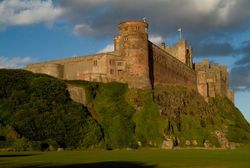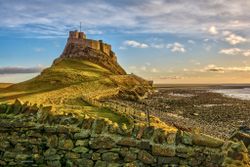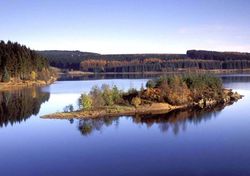Earldom of Northumberland
This article or section marked as work-in-progress has not been edited in over seven days, but further work is required. Please notify the user who first added this template. |
Earldom of Northumberland | |
|---|---|
| Kingdom of Northumbria | |
| Capital | Bamburgh (national) Alnwick (county) |
| Largest city | Tynemouth |
| Official languages | English (British English, Northumbrian dialects) |
| Demonym(s) | Northumberland |
| Government | Earldom in a unitary parliamentary constitutional monarchy |
• King of Northumbria | King of Northumbria |
• Prime Minister of Northumbria | Prime Minister of Northumbria |
• Earl of Northumberland | Earl of Northumberland |
• Chairman of Northumberland Council | Chairman of Northumberland Council |
| Legislature | Northumberland Council |
| Establishment | 24/11/2020 |
| Currency | Pound Sterling |
| Time zone | Northumbrian Standard Time |
Northumberland, or more properly the Earldom of Northumberland is one of six constituencies within the Kingdom of Northumbria, and ceremonially one of its two 'kingly provinces', displayed on the national coat of arms alongside the county of Durham. It borders the counties of Durham and Newcastle to the south and Hexhamshire to the west. It is Northumbria's largest county by area and its second largest by population, though most inhabitants are located within the Tyneside urban area in the county's south.
History
Kingdom of Sorrenia
Northumberland was first claimed by Northumbria's predecessor - the Kingdom of Sorrenia - during the 'Great Expansion', when the Sorrenian government greatly expanded the territorial claim of Sorrenia to encompass all of the North East, North Yorkshire and much of the North West. At the time it was the second largest county behind Yorkshire. With its small population however, Northumberland played only a minimal role in Sorrenian political affairs, though was celebrated as a source of cultural pride during the adoption of Northumbrianism.
Kingdom of Northumbria
The reformed county of Northumberland under the Kingdom of Northumbria was significantly altered compared to its Sorrenian and British counterparts. Most notably, it lost the regions of Hexhamshire (which became a separate county) and Bedlingtonshire and Islandshire (which were ceded to County Durham). At the same time, most of North Tyneside was incorporated into Northumberland, dramatically increasing its population. This left Northumberland the largest county by area and the second largest by population, though most of this population is centred in the south-east Tyneside region.
Government
Northumberland is the only county headed by a member of the Northumbrian nobility - the Earl of Northumberland is the county's head of state, and is a hereditary title. Northumberland's legislature is a county council appropriately called Northumberland Council. The second largest county council in Northumbria, it consists of twenty-nine members and is dominated by the National Democratic Party.
The Earl of Northumberland, as head of state of Northumberland, is entitled to appoint four members to the Witan, the upper chamber of Northumbria's legislature. The Earl has always appointed members of the NDP, and there is no legal expectation that he will appoint members proportionally.
Political parties
Politics in Northumberland is dominated by the NDP, who regularly possess a supermajority in the county council. Their nearest competitor in the rural parts of the county are the Christian Democrats, while the Socialist Party and the Liberal-Green Alliance see some success in the southern Tyneside constituencies.
Geography
Northumberland is a rural county, with its population mostly centred in the North Tyneside metro region in the south-east of the county. The Northumberland National Park and Kielder Forest Park make up much of Northumberland's area, and are both located in the county's west in the Cheviots, a range of uplands straddling the Northumberland-Scottish border.
Economy
This section is empty. You can help by adding to it. (September 2022) |
Culture
This section is empty. You can help by adding to it. (September 2022) |
Gallery
-
Bamburgh Castle -
Lindisfarne -
Kielder Reservoir -
Alnwick Castle





